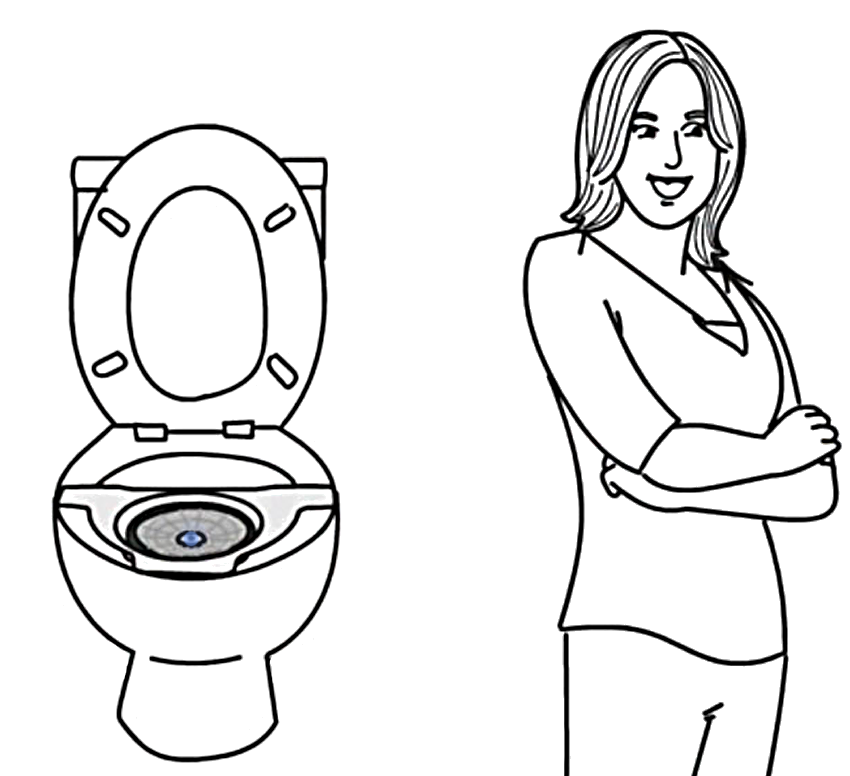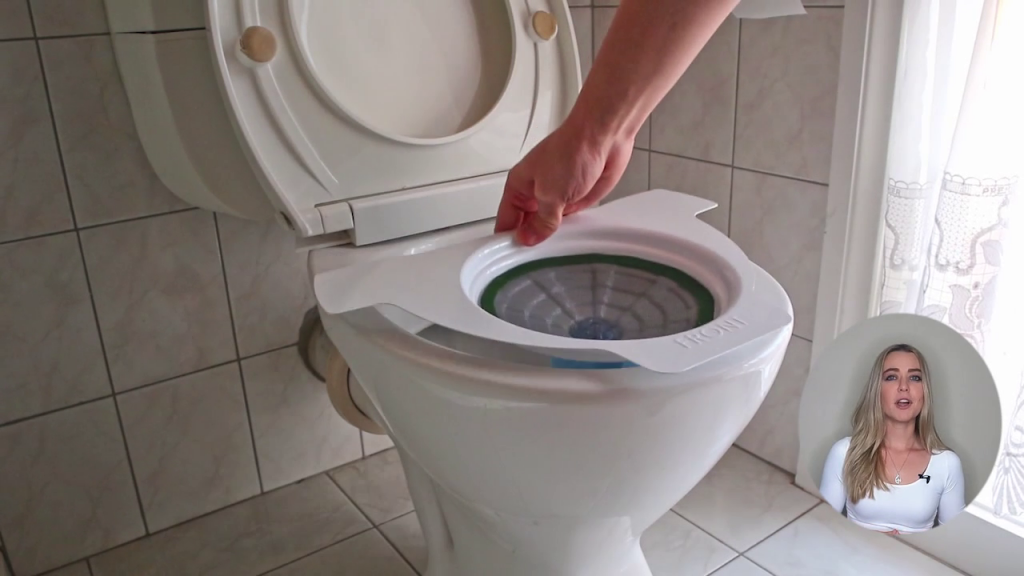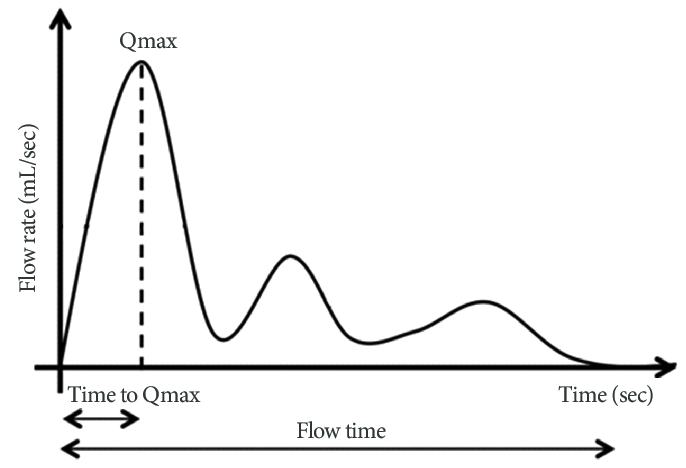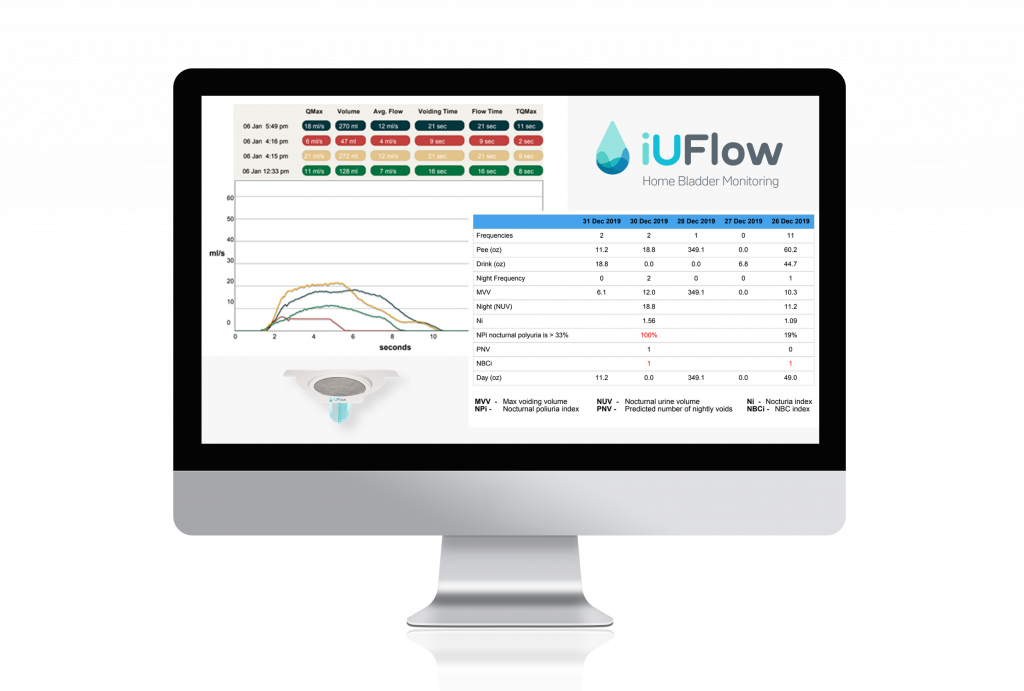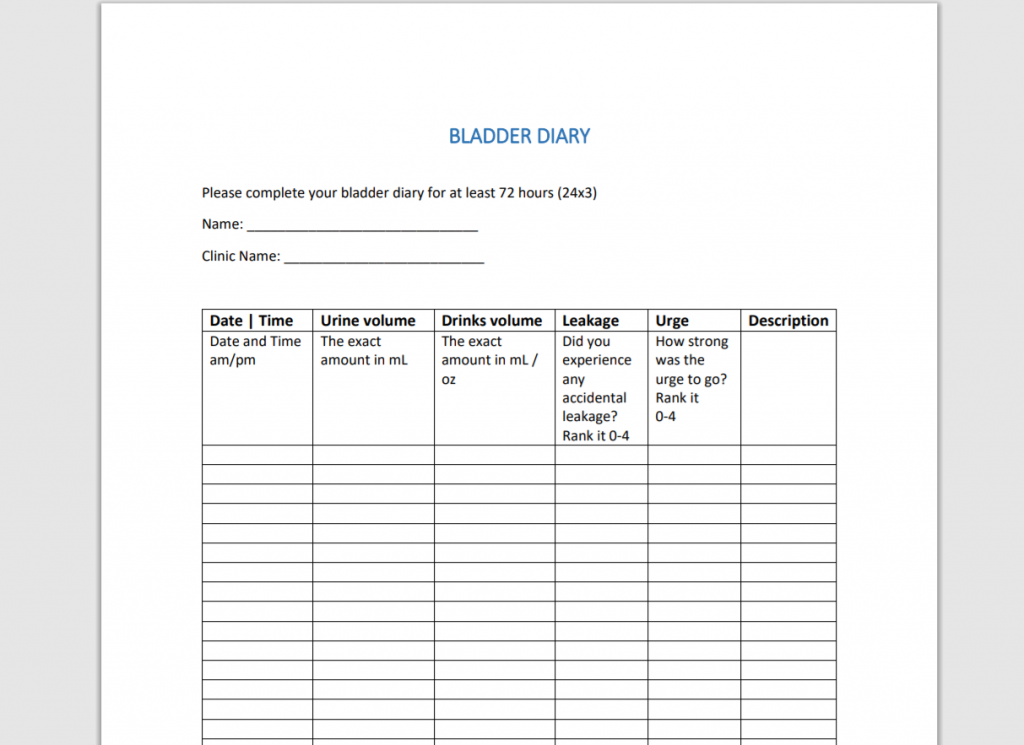Urine Voiding Diary is a tool assisting to estimate and record how much liquid is in, how frequent you urinate, and another events. For example, when a urine leakage occurs. Urine diary is also known as Voiding Diary or Urine Frequency volume chart – FVC.
How to complete a 3-Day Urine Voiding Diary?
1. First, complete the urine voiding diary for at least 3 days. Meaning, 24 hours ×3.
2. On the first day of recording events, in the urine voiding diary: Fill in your name and date at the top of the voiding diary form.
How to add events into the diary:
Time of day/night: Have one urine diary sheet for every 24 hours. In the time column, fill out your sleeping time (i.e. 10:30pm) and wake-up time (i.e. 5:15am) directly. Begin with recording all fluid intake (don’t forget your coffees) and urinary events, starting at 6am and ending the following day at 6am. This is a good convention to follow. Fill in the event next to the appropriate time slot.
Fluid (Intake): Under the “fluid intake” column, fill in the amount of fluids you drank (on each time). Usually in units of ml or in ounces – over a given time period.
Toilet (Urination): Under the “toilet voids” column. First, make sure that the urinary container is in the toilet. Remember to check that for each time you urinate. Measure the amount of urine you voided (in ml) for each time you urinated in the toilet. Repeat that for each time over at least 24-hour period.
Amount of Urine Drained with Catheter (optional). Write down the amount of urine (in ounces or millilitres) that you drained using a catheter. Mention if this was a residual urine volume (i.e. 125 ml residual [R], or 175 ml catheter [C] void). If you do not use a catheter, ignore it and leave this column blank.
Leaks: In the column marked “leaks”. Mark each time you had involuntary urine loss (even a small amount) before you made it to the toilet.
Some patients are asked to mention Pad Changes: Under “description”, you can write down on each time you changed your pad. Mention whether the pad was dry, for instance, write it as “D”. In case that the pad was wet with urine, fill in shortly whether it was a “S”, “M” or a “L” amount.
Urine Voiding Diary – pen and paper style (PDF). Printable urine-voiding-diary.pdf
An example of a diary template
Indicate to what degree you had:
•Leakage prior to getting to the toilet
•Urgency degree to go to the toilet.
Extra: a short description (optional).
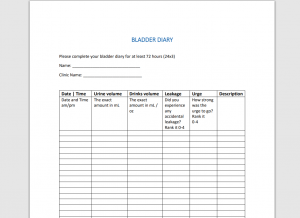
Display and print your own urine voiding diary template by clicking this link
This urine voiding diary is printable and free to use. no ads, no shticks.
A urine bladder diary is the best tool to track your bladder habits and symptoms. Whether for a Urinary Tract Infection, BPH, Incontinence, Nocturia, Overactive Bladder, Kidney related symptoms or lower urinary tract symptoms (LUTS).
This is basically the manual way of doing that. The better way is to consider a smartphone app or getting an iUFlow device. With that, you can self diagnose, learn about your symptoms and show your PT or Urologists real-time bladder data.
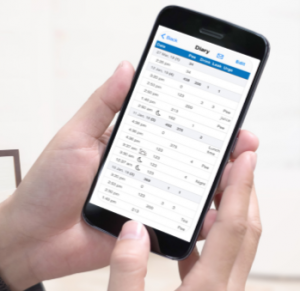
What is a home uroflow?
Read more about iUFlow. Should I really consider getting one?
Why Uroflow? Why iUFlow?
Bladder management (BM) with iUFlow. In short, iUFlow assists doctors with the precise diagnosis and monitoring of Lower Urinary Tract Symptoms (LUTS). Bladder or LUTS symptoms can be mild and should be monitored. Whether you’re suffering from symptoms like: painful voiding, cloudy urine or blood in your voiding. Those are obviously a sign to call for help. Don’t waste time on self diagnosing or googling, consult your Urologist or primary care.
Get iUFlow Premium app for Free. Download it from app store.
